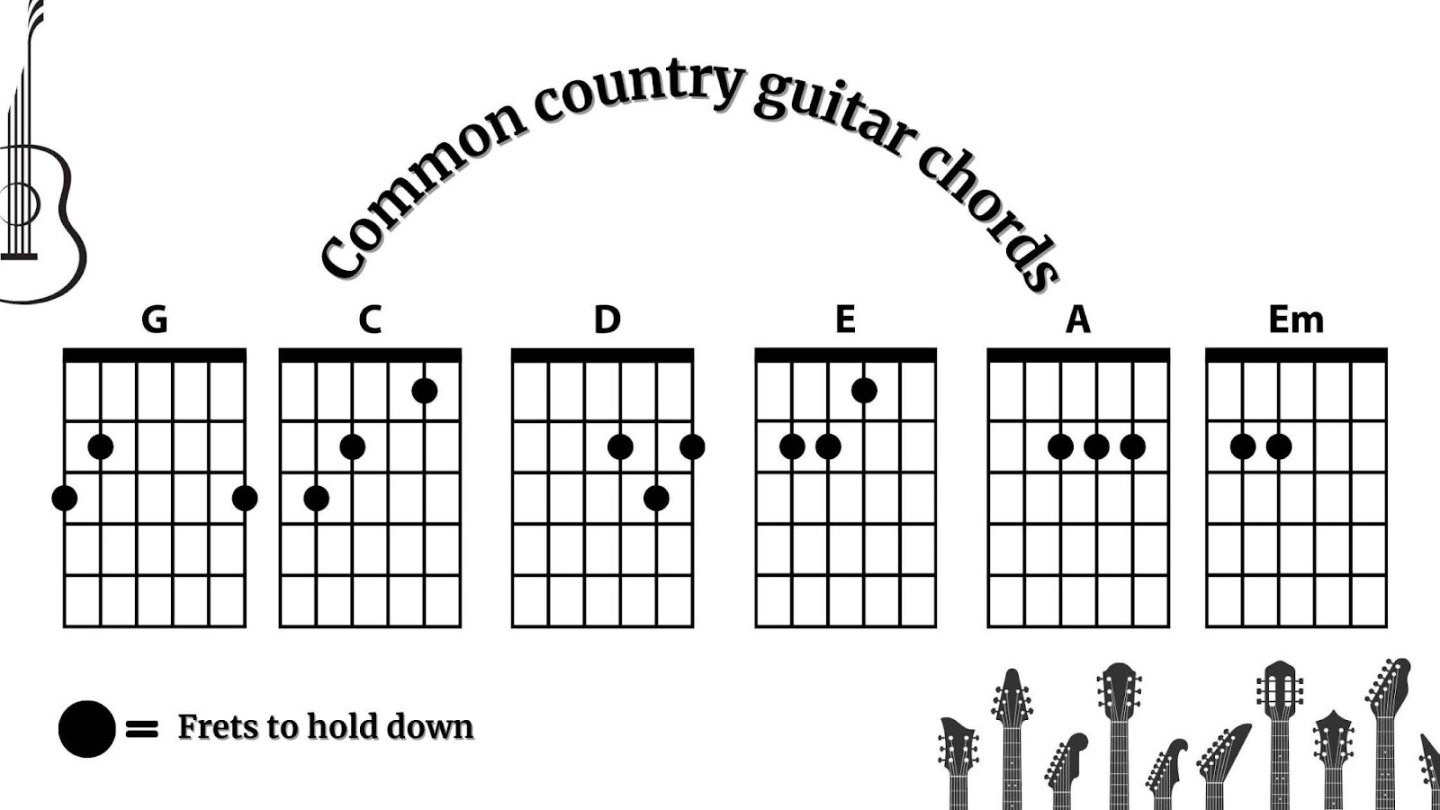—
Country Guitar Chord Progressions: Your Guide to That Twangy Sound
Country music, with its heartfelt stories and down-to-earth vibes, relies heavily on simple yet effective chord progressions. If you’re looking to capture that classic country twang in your guitar playing, understanding these progressions is key. It’s not about complicated theory; it’s about feeling the music and knowing what chords work together. So, let’s dive into some of the most common and useful chord progressions that’ll have you sounding like a seasoned country picker in no time.
The Classic I-IV-V Progression
This is the bread and butter of country music. You’ll find it in countless songs, from old-school classics to modern hits. The I-IV-V progression is simple: you take the root chord (I), move to the fourth chord (IV), and then to the fifth chord (V). In the key of G, that’s G (I), C (IV), and D (V).

Why is it so popular? It’s versatile and sounds great in almost any tempo or style. You can strum it slow for a ballad or speed it up for a foot-stomping tune. Try experimenting with different strumming patterns and rhythms to see how you can make it your own. For example, in the key of C, the chords are C, F, and G.
The I-vi-IV-V Progression: Adding Some Emotion
This progression adds a touch of melancholy and depth to your playing. The “vi” chord, which is the minor sixth chord, brings a bit of sadness or longing to the mix. In the key of G, this would be G (I), Em (vi), C (IV), and D (V).
This progression is perfect for songs that tell stories of heartbreak, reflection, or nostalgia. It’s got that classic country storytelling feel. It’s a great way to add some emotional complexity to your music. In the key of A, the chords are A, F#m, D, and E.
The I-V-vi-IV Progression: A Bit of Pop Country
This progression has a slightly more modern, pop-country feel. It’s still got that country foundation, but it’s a bit brighter and more upbeat. In the key of C, that’s C (I), G (V), Am (vi), and F (IV).
This progression is great for songs that are a bit more optimistic or have a driving rhythm. It’s very common in contemporary country hits. It’s got that catchy, sing-along quality that makes it so popular. In the key of D, the chords are D, A, Bm, and G.
The I-vi-ii-V Progression: A Touch of Jazz
For those looking to add a bit of sophistication to their country playing, the I-vi-ii-V progression is a great choice. The “ii” chord, which is the minor second chord, adds a touch of jazz and complexity. In the key of G, this would be G (I), Em (vi), Am (ii), and D (V).
This progression is perfect for songs that have a more introspective or thoughtful feel. It’s a bit more advanced, but it’s worth learning if you want to expand your country playing. In the key of E, the chords are E, C#m, F#m, and B.
The I-IV-I-V Progression: Simple and Effective
Sometimes, simplicity is key. The I-IV-I-V progression is a straightforward and effective way to create a classic country sound. It’s repetitive, but in a good way, creating a solid foundation for your song. In the key of A, you’d play A, D, A, and E.
This progression is great for songs that have a strong, driving rhythm or a simple melody. It’s easy to remember and play, making it perfect for beginners. In the key of C, the chords are C, F, C, and G.
Adding Seventh Chords: A Touch of Blues
Country music often borrows from the blues, and adding seventh chords can give your playing a bluesy edge. Try using dominant seventh chords (like G7, C7, and D7) in your progressions. They add a bit of grit and soul to your sound.
For example, you could play a I-IV-V progression with seventh chords, like G7-C7-D7. This adds a richer, more complex sound to the classic progression. Experiment with adding seventh chords to your favorite progressions and see how they change the feel of the music.
Using Capos: Expanding Your Range
Don’t forget the power of a capo. A capo allows you to change the key of your guitar without having to learn new chord shapes. This is especially useful in country music, where songs are often played in different keys.
For example, if you know a progression in the key of G, but you want to play it in the key of A, you can simply put a capo on the second fret and play the same G shapes. This opens up a whole new world of possibilities for your playing.
Experimenting with Strumming Patterns
Chord progressions are just the foundation. The way you strum those chords can make a huge difference in the overall feel of your music. Try experimenting with different strumming patterns, from simple down-strokes to more complex fingerpicking patterns.
For example, you could try a basic “boom-chuck” pattern, where you play the bass note on the downbeat and strum the rest of the chord on the offbeat. This is a classic country strumming pattern that works well with many different progressions.
Conclusion
Country guitar chord progressions are the backbone of the genre, offering a blend of simplicity and emotional depth. By mastering these common progressions and experimenting with different variations, you can unlock a world of twangy, heartfelt music. Remember, it’s not just about playing the right chords; it’s about feeling the music and letting it flow through your fingers. So, grab your guitar, start practicing, and let those country chords take you on a journey. With a little practice, you’ll be well on your way to playing some great country tunes.

